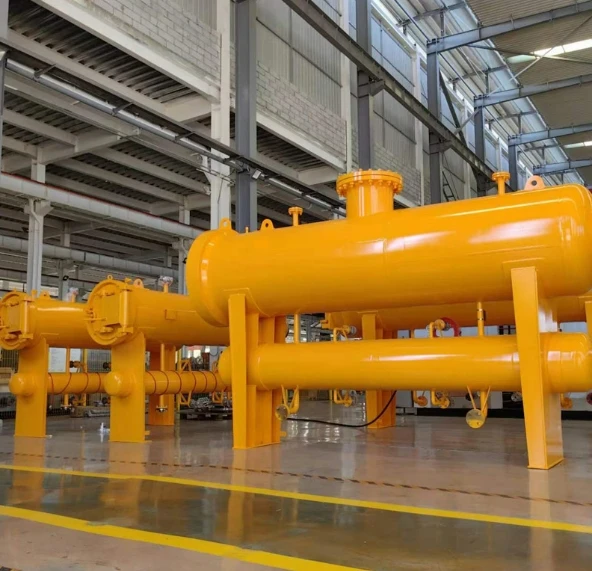
Dec . 13, 2024 13:58
Back to list
Gas Pressure Regulation Valve for Efficient Flow Control and Safety Management
Understanding Gas Pressure Regulating Valves
Gas pressure regulating valves play a crucial role in the safe and efficient distribution of gas in various applications, ranging from residential heating systems to large industrial processes. By maintaining the correct pressure levels, these valves ensure that gas appliances operate effectively while minimizing the risk of hazardous conditions.
The Importance of Gas Pressure Regulation
Gas is delivered from suppliers at a high pressure, but most applications require a lower, more manageable pressure level. Gas pressure regulating valves (PRVs) are engineered to lower the pressure of gas as it flows from the supply line to the end-user devices or systems. Without proper regulation, appliances could receive excessive pressure, leading to equipment damage, increased risk of leaks, and potentially dangerous situations, including explosions.
How Gas Pressure Regulating Valves Work
The basic principle behind a gas pressure regulating valve involves a diaphragm that responds to changes in pressure. When gas flows into the valve, it exerts pressure against the diaphragm. If the output pressure exceeds the set point, the diaphragm moves to throttle the gas flow, reducing the pressure to a safe level. Conversely, if the pressure drops below the desired level, the diaphragm allows more gas to flow through to maintain the necessary output pressure.
There are several types of pressure regulating valves, including
1. Single-stage Regulators These are used for low-pressure applications and provide a straightforward reduction of high pressure to a moderate level. 2. Two-stage Regulators These are often used in systems that require high precision. The first stage reduces the pressure to an intermediate level, while the second stage ensures a stable output pressure.
3. Electronic Regulators These utilize sensors and electronic controllers to provide precise pressure management in real time, making them suitable for complex or critical applications.
.
Gas pressure regulating valves are widely used in both residential and industrial settings
صمام تنظيم ضغط الغاز

- Residential Applications In homes, these valves regulate gas pressure for various appliances, including furnaces, water heaters, and stoves. Ensuring stable pressure not only enhances performance but also improves energy efficiency.
- Industrial Applications In the industrial sector, PRVs are crucial for processes that involve gas combustion, including power generation and chemical manufacturing. They help maintain the optimal operating conditions for burners and other equipment.
- Medical Gas Systems In healthcare facilities, accurate gas pressure regulation is essential for the safe delivery of medical gases such as oxygen and nitrous oxide.
Safety Features in Gas Pressure Regulating Valves
Given the potential hazards associated with gas use, safety features are a key consideration in the design of PRVs
- Relief Valves Many regulators are equipped with pressure relief valves that release excess pressure to prevent over-pressurization.
- Lock-Up Pressure Settings This feature ensures that if there is a failure in the system, the valve will automatically close to prevent gas flow.
- Fail-Safe Mechanisms These mechanisms are designed to shut down the gas supply in the event of a malfunction, protecting both users and property.
Conclusion
Gas pressure regulating valves are indispensable components in the field of gas distribution and usage. They not only enhance performance and efficiency but also significantly contribute to safety. As technology advances, the design and capabilities of these valves continue to improve, paving the way for even more applications across various fields. Whether in a home or a large industrial facility, understanding and maintaining the integrity of gas pressure regulating valves is essential for safe and efficient gas management.
Regular inspections and maintenance are essential to ensure that these components function effectively and comply with safety regulations, thereby protecting both users and equipment from the risks associated with gas pressure fluctuations.
Next:
Latest news
-
Safety Valve Spring-Loaded Design Overpressure ProtectionNewsJul.25,2025
-
Precision Voltage Regulator AC5 Accuracy Grade PerformanceNewsJul.25,2025
-
Natural Gas Pressure Regulating Skid Industrial Pipeline ApplicationsNewsJul.25,2025
-
Natural Gas Filter Stainless Steel Mesh Element DesignNewsJul.25,2025
-
Gas Pressure Regulator Valve Direct-Acting Spring-Loaded DesignNewsJul.25,2025
-
Decompression Equipment Multi-Stage Heat Exchange System DesignNewsJul.25,2025

